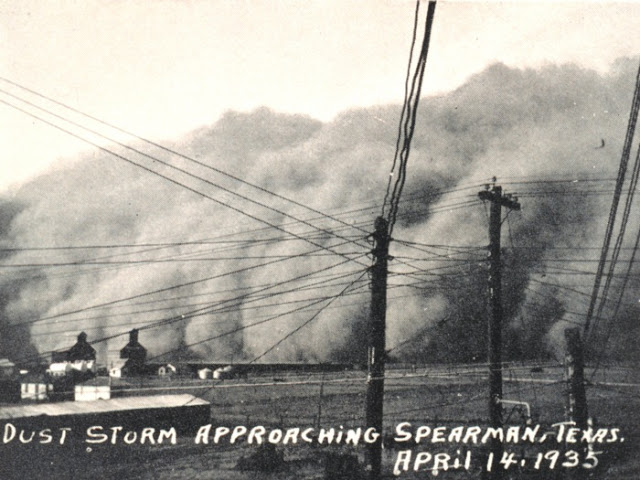Post 5: Dust Bowl Legacies
"The high plains never fully recovered from the Dust Bowl. The land came through the 1930s deeply scarred and forever changed, but in places it healed" (Egan 2006: 309).
Certainly, as Egan points out in the epilogue, the high plains still suffer the effects of the Dust Bowl. The populations of towns and counties such as Dalhart, Boise City, and Baca never again reached the highs of the late 1920s. The government bought much of the land and attempted to restore the shortgrass prairie environment. And in places it worked. Prompted by the federal government, states like Oklahoma developed soil conservation districts to help educate and monitor farmers about appropriate dryland farming practices. I'm proud that my husband Chris, when we lived in Oklahoma, worked in the state's Conservation Commission. His job -- working with farmers to help restore valuable wetlands -- is a legacy of the Dust Bowl. Lessons were learned, although they were certainly learned the hard way.
In many places, cattle once again roam the plains. Driving along I-40 west from Oklahoma City, through the Texas Panhandle, you can see -- and smell -- evidence of this. CAFOS, or confined animal feeding operations, abound in high plains today.
There are still skeletons of towns along the highways and roads, evidence of the people that once lived here but lost the fight. As Egan notes, there is still a lot of shame about the Dust Bowl. While the general American population might not think too much about it these days, the people who lived during that time, and their children, remember -- remember the shame of abject poverty, of having to rely on government help, of having "government men" berate them for their bad farming practices, of failing. Even today in Oklahoma, many old time Okies cannot abide John Steinbeck's novel, This reaction has changed very little from the critical review the novel received in Oklahoma at the time of its publication in 1939. * As you finish the last assigned chapters of The Worst Hard Time, consider the cultural and emotional impacts for everyday folks living through The Dust Bowl.
*This has always confused me, since although they were poor, the Joads were also noble and hard-working. I often wonder if these critics, especially those today, have even read it!


Comments
Post a Comment